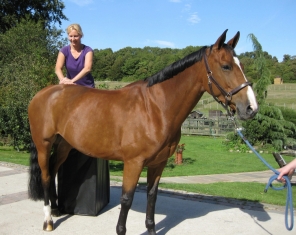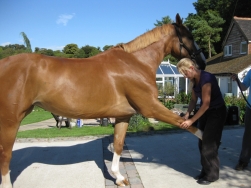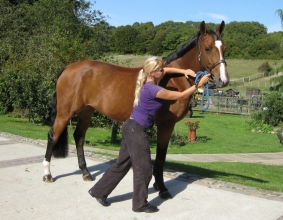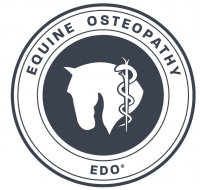
MVDr. Adela
Snokhousova,
CertAVP(ES-O & VDI), EDO
MRCVS,
Certified in
veterinary chiropractic,
Equine Osteopath,
Canine Osteopath
Based at:
East Kent Equine Ltd
21 Mill Road
Deal CT14 9AH
eastkentequine
@hotmail.com
01304 364648
07572 661403
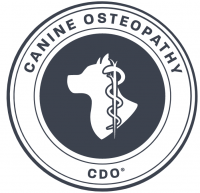
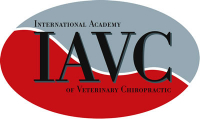
Chiropractic and osteopathic treatments for horses
The importance of checking spine mobility: Reduced mobility between two vertebrae will in time aff Negative alteration in the nerve’s function can lead to interference in the flow of stimuli or information, which is necessary for smooth coordination of body functions and muscle contractions. Every movement, from a slight twitch of the tail to the complicated piaffe in dressage is made possible by synchronizing many muscles. If the function of the nerve fibers, which innervate these muscles, is altered, coordination deteriorates. Small disturbances are usually only caused by a slight interference; however, they can keep the horse from performing at its best in daily routine as well as in demanding exercises. Missteps resulting from lack of coordination may cause injury to other joints and tendons or ligaments in the legs. The horse will change their posture to compensate for the restricted mobility of its spine and to avoid pain. This triggers increased mechanical strain on other parts of the spine and extremity joints, causing secondary restrictions and deterioration of the condition.
What are the symptoms? Horses with back pain often express this in their posture or in their refusal to work. The animals attempts to compensate for the pain by changing its posture and way of going can result in other problems such as joint changes.
The following symptoms in a horse may indicate back pain: • Reduced performance • Abnormal posture • Snapping and pinning back its ears when being saddled • Insubordination when being ridden • The attempt to free itself by throwing its head back or up or by hollowing the back • Swishing its tail and pinning back its ears • Disobedience when jumping • Difficulties with collected or lateral gaits • Changes in behavior • Frightened or painful facial expression • Sensitivity to touch
Restriction of motion in the spine can affect muscle coordination and mobility of the horse, thereby causing decreased performance. The following symptoms may occur: • Unleveled gait rhythm • Irregularity of gait which cannot be assigned to a particular leg or gait • Stiffness when the horse leaves the stable • Stiffness when bending and in its general posture • Muscular atrophy • Brushing or interfering • Difficulty engaging the hindquarters • Difficulty working “long and low” • Shortened stride in one or more legs • Overall decreased range of motion in gait • Difficulty flexing the poll • Lameness • Horse pulls against one rein • Rider is seated off centre due to the horse • The back does not swing
A major effect of a spinal restriction can be impairment to the flow of information in • Unusual itching at the base of the tail or other parts of the body • Increased sensitivity to heat and cold • Asymmetrical or reduced perspiration
How can a vertebral restriction be corrected ? When a chiropractor or veterinarian, professionally trained in animal chiropractic or osteopathy, identifies a restriction, he or she aims to restore mobility to the facet joints. This is achieved via a quick, short thrust along the plane of the joint. This is called an adjustment.
The adjustment is a very specific, high speed, low force maneuver that moves the affected joint beyond the normal physiological articular range of movement, without exceeding the boundaries of anatomical integrity. It is done by placing the hands directly on the affected vertebra (previously identified in the examination). Only affected vertebrae are adjusted.
Even though horses have a very large, thick muscle mass over the spine, the vertebral joints are flexible and relatively easy to manipulate with minimal force. If the correct technique is used the ligaments are not adversely affected.
|

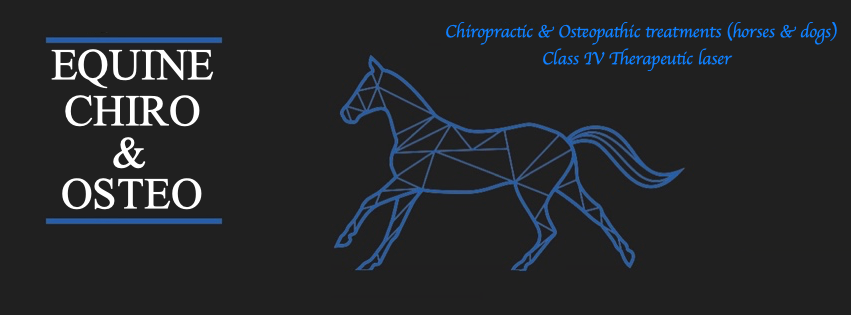
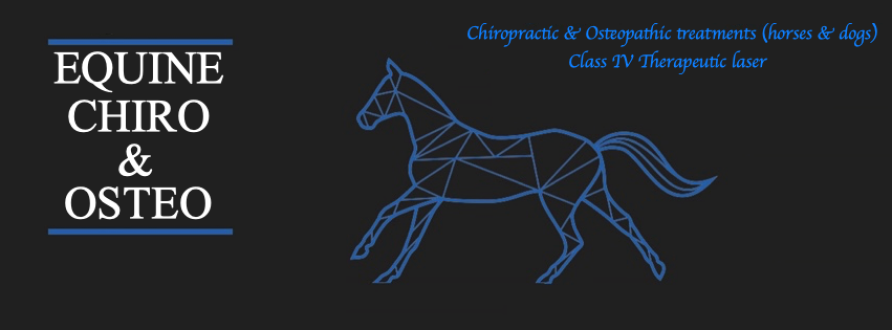
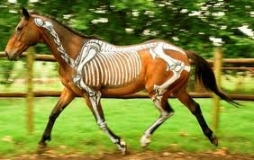 ect the nerves that leave the spinal cord between these adjacent vertebrae.
ect the nerves that leave the spinal cord between these adjacent vertebrae.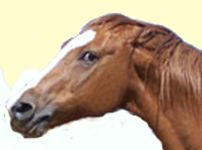
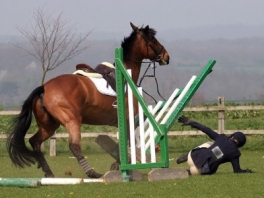
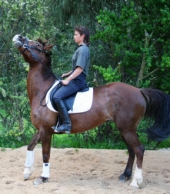
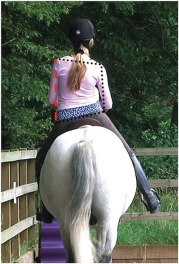
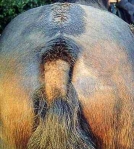 the nerves which exit the spinal cord between the vertebrae. As these nerves innervate the skin, certain glands and blood vessels, such
the nerves which exit the spinal cord between the vertebrae. As these nerves innervate the skin, certain glands and blood vessels, such 